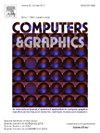基于单深度图像的典型位姿重建,用于有限数据集上的三维非刚性位姿恢复
IF 2.8
4区 计算机科学
Q2 COMPUTER SCIENCE, SOFTWARE ENGINEERING
引用次数: 0
摘要
从2D输入进行3D重建,特别是对于像人类这样的非刚性物体,由于可能发生的变形范围很大,因此呈现出独特的挑战。传统的方法往往难以处理非刚性形状,这需要大量的训练数据来覆盖整个变形空间。本研究通过提出一种规范姿态重建模型来解决这些局限性,该模型将可变形形状的单视图深度图像转换为规范形式。这种对齐通过启用刚性对象重建技术的应用来促进形状重建,并支持在体素表示中恢复输入姿态,作为重建任务的一部分,利用原始和变形的深度图像。值得注意的是,我们的模型使用了一个总共有300个样本的小数据集,其中包含了形状(肥胖、苗条和健康的身体)、性别(女性和男性)和尺寸(儿童和成人)的变化,从而获得了有效的结果。动物和人类数据集的实验结果表明,我们的模型优于其他最先进的方法。本文章由计算机程序翻译,如有差异,请以英文原文为准。

Canonical pose reconstruction from single depth image for 3D non-rigid pose recovery on limited datasets
3D reconstruction from 2D inputs, especially for non-rigid objects like humans, presents unique challenges due to the significant range of possible deformations. Traditional methods often struggle with non-rigid shapes, which require extensive training data to cover the entire deformation space. This study addresses these limitations by proposing a canonical pose reconstruction model that transforms single-view depth images of deformable shapes into a canonical form. This alignment facilitates shape reconstruction by enabling the application of rigid object reconstruction techniques, and supports recovering the input pose in voxel representation as part of the reconstruction task, utilising both the original and deformed depth images. Notably, our model achieves effective results with using a small dataset with 300 samples in total, containing variations in shape (obese, slim and fit bodies) and gender (female and male) and size (child and adult). Experimental results on animal and human datasets demonstrate that our model outperforms other state-of-the-art methods.
求助全文
通过发布文献求助,成功后即可免费获取论文全文。
去求助
来源期刊

Computers & Graphics-Uk
工程技术-计算机:软件工程
CiteScore
5.30
自引率
12.00%
发文量
173
审稿时长
38 days
期刊介绍:
Computers & Graphics is dedicated to disseminate information on research and applications of computer graphics (CG) techniques. The journal encourages articles on:
1. Research and applications of interactive computer graphics. We are particularly interested in novel interaction techniques and applications of CG to problem domains.
2. State-of-the-art papers on late-breaking, cutting-edge research on CG.
3. Information on innovative uses of graphics principles and technologies.
4. Tutorial papers on both teaching CG principles and innovative uses of CG in education.
 求助内容:
求助内容: 应助结果提醒方式:
应助结果提醒方式:


